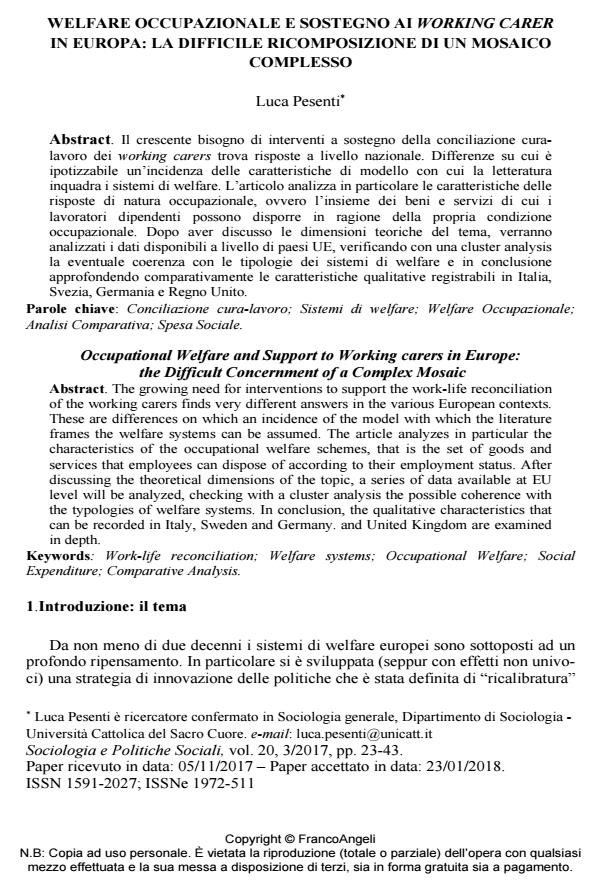Occupational Welfare and Support to Working carers in Europe: the Difficult Concernment of a Complex Mosaic
Journal title SOCIOLOGIA E POLITICHE SOCIALI
Author/s Luca Pesenti
Publishing Year 2018 Issue 2017/3
Language Italian Pages 21 P. 23-43 File size 293 KB
DOI 10.3280/SP2017-003003
DOI is like a bar code for intellectual property: to have more infomation
click here
Below, you can see the article first page
If you want to buy this article in PDF format, you can do it, following the instructions to buy download credits

FrancoAngeli is member of Publishers International Linking Association, Inc (PILA), a not-for-profit association which run the CrossRef service enabling links to and from online scholarly content.
The growing need for interventions to support the work-life reconciliation of the working carers finds very different answers in the various European contexts. These are differences on which an incidence of the model with which the literature frames the welfare systems can be assumed. The article analyzes in particular the characteristics of the occupational welfare schemes, that is the set of goods and services that employees can dispose of according to their employment status. After discussing the theoretical dimensions of the topic, a series of data available at EU level will be analyzed, checking with a cluster analysis the possible coherence with the typologies of welfare systems. In conclusion, the qualitative characteristics that can be recorded in Italy, Sweden and Germany. and United Kingdom are examined in depth.
Keywords: Work-life reconciliation; Welfare systems; Occupational Welfare; Social Expenditure; Comparative Analysis.
Luca Pesenti, Welfare occupazionale e sostegno ai working carer in europa: la difficile ricomposizione di un mosaico complesso in "SOCIOLOGIA E POLITICHE SOCIALI" 3/2017, pp 23-43, DOI: 10.3280/SP2017-003003